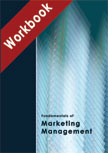Multi-Branding Strategy of Videocon Industries in the Consumer Durables Sector
|
|
ICMR HOME | Case Studies Collection
Case Details:
Case Code : MKTG116
Case Length : 17 Pages
Period : 1980 - 2005
Pub Date : 2006
Teaching Note :Not Available
Organization : Google Inc.
Industry : Consumer Durables
Countries : USA
To download Multi-Branding Strategy of Videocon Industries in the Consumer Durables Sector case study
(Case Code: MKTG116) click on the button below, and select the case from the list of available cases:

Price:
For delivery in electronic format: Rs. 300;
For delivery through courier (within India): Rs. 300 + Shipping & Handling Charges extra
» Marketing Case Studies
» Marketing Management Short Case Studies
» View Detailed Pricing Info
» How To Order This Case
» Business Case Studies
» Case Studies by Area
» Case Studies by Industry
» Case Studies by Company
Please note:
This case study was compiled from published sources, and is intended to be used as a basis for class discussion. It is not intended to illustrate either effective or ineffective handling of a management situation. Nor is it a primary information source.
Chat with us

Please leave your feedback

|
|




<< Previous
Excerpts
Background Note
In 1984, Nandlal Madhavlal Dhoot (N.M.Dhoot),
together with his three sons - Venugopal, Rajkumar and Pradeep -
founded VI in technical collaboration with the Japan-based Toshiba
Corporation. Until then, the family had some sugar mills and a few
other low-profile industrial interests in the Marathwada region of
Maharashtra, India. With time, they had grown in stature but the
establishment of VI surprised industry watchers...
VI's Brand Portfolio
Over the years, VI has bought the marketing and manufacturing
rights to several MNC brands (Refer Exhibit II for VI's brands and product
portfolio).
Initially, VI collaborated with Toshiba for technology and later bought the
marketing rights of the brand in India. Subsequently, VI bought the marketing
rights for Akai, Sansui, and Hyundai.
In 2005, VI has also bought the marketing rights of Electrolux, Kelvinator and
Allwyn...
|

|
The Rationale for Multi-Branding
Prior to the liberalization of the Indian economy , the
Indian consumer durables industry was dominated by Indian brands, both national
as well as regional. The national brands included BPL, Onida, and Videocon and
the regional brands were Weston, Bush, Salora, etc.
|
|
The Downsides
Experts suggested that a major drawback of following a multi-branding strategy is that unless the positioning and targeting are distinct, the brands tend to cannibalize each other. Even though the company may position the brands differently, it has to be perceived by the customers as distinct from the other brands...
Future Outlook
As of 2005, LG and Samsung had cornered a lion's share of the
television and home appliances market. Moreover, Philips was chalking out major
plans to rejuvenate its business in India... |
Exhibits
Exhibit I: Videocon International's Financials
Exhibit II: VI's Brand & Product Portfolio
Exhibit III: About Akai Electric Co. Ltd
Exhibit IV: A. Market Shares in The Indian CTV Market in 2001
Exhibit V: Market Shares in Indian Microwave Oven Market in 2000
Exhibit VI: About Kelvinator
Exhibit VII: About Allwyn
Exhibit VIII: Market Shares in Indian Washing Machines Market in 2004
Exhibit IX: Market Shares in Indian Refrigerators Market in 2001
Exhibit X: Market Shares in The Indian AC* Market-1998-2004
|
|









